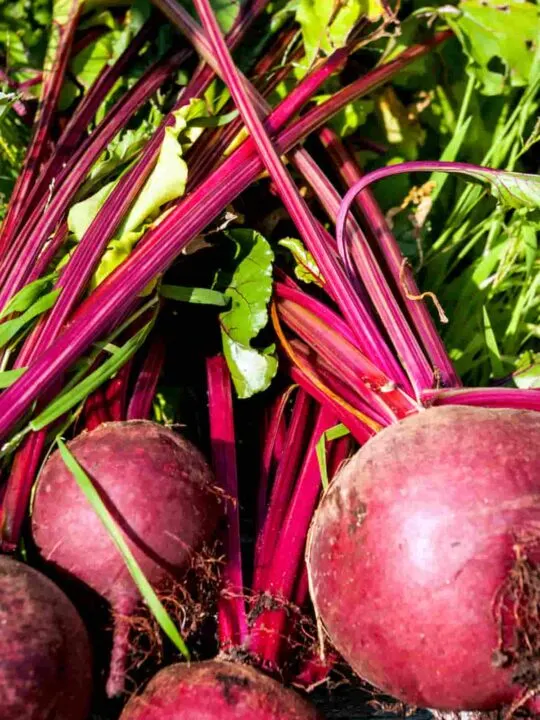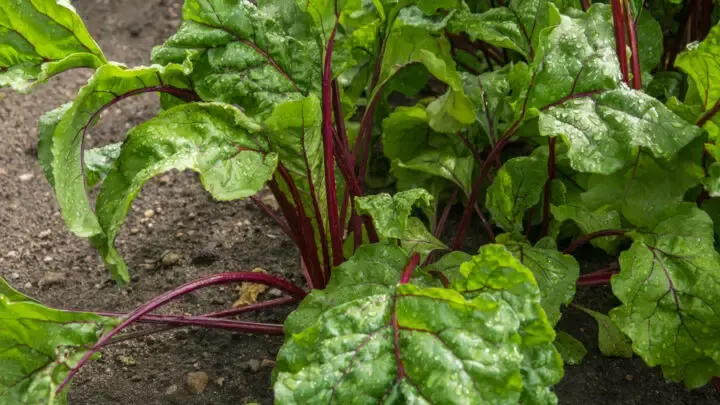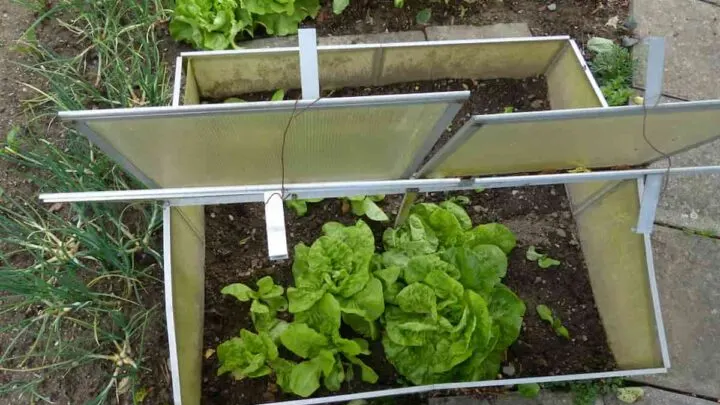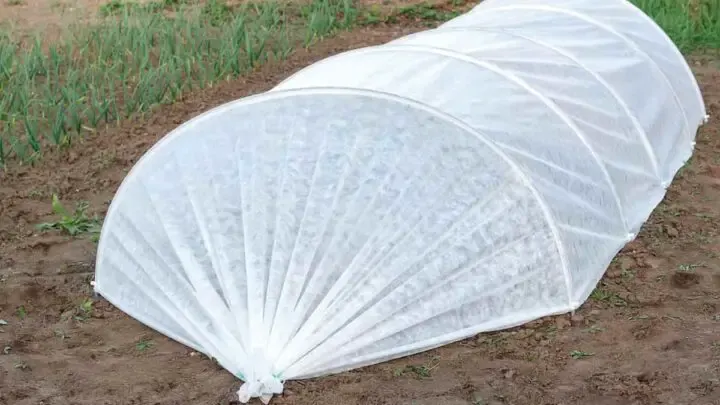Beets are known for their tolerance to cold temperatures and can be grown year-round in some areas of the world. Although cold and hardy, beets will not survive when temperatures drop below freezing for an extended period. At home, greenhouses have grown in popularity in recent years and can aid in creating a longer growing season for many vegetables. So what gardeners in locations with seasonal weather may wonder can you grow beets in a greenhouse?
Beets can grow successfully in a greenhouse if their care conditions are met. Factors to address when growing greenhouse beets include soil type, lighting, temperature, and humidity. Appropriate hydration, pest control, and fertilization are also necessary for growing healthy greenhouse beets.
Read on to learn more about growing beets successfully in a greenhouse setting.

Things To Know About Growing Beets In A Greenhouse Setting
Before you try your hand at growing beets in a container, there are a few things you should know about how this process works. This includes knowing how to properly plant the seeds, soil types that work well, spacing, and even proper lighting. Let’s get into it!
Planting Seeds
Common to most root vegetables, beets will grow best if seeds are planted in their permanent location rather than in small containers and transplanted later. Seeds should be planted 3 – 4 inches apart, in rows at least 6 inches apart.
Only plant seeds 1/4 inch to 1/2 inch deep in the existing soil before topping them with another 1/2 to 3/4 inch looser soil. After about 2 to 3 weeks, thin the beet seedlings out, so they maintain the planting distance of 3 – 4 inches between them.
Container & Spacing
Greenhouse growing can be quite successful in-ground or using containers.
If you are growing your greenhouse beets in containers, ensure they are plenty deep and wide enough to allow the beet to fully develop underneath the soil. To give beets enough space to reach their anticipated size beneath the earth, containers should be at least ten inches deep, so the roots have room to develop beyond the beet tuber.
Containers must be large enough for beet plants to be 3 – 4 inches apart, including the space between the plant and the container’s edge. Also, growing containers should have plenty of holes in the bottom to drain extra moisture.

Soil & Nutrients
Beets need loose, well-draining soil to create a space where the roots and tuber can easily expand under the earth.
Thick, clay-like soil will only lead to small, disfigured beets with little edibility. Implementing soil with sand, ash, bone meal, and loose manure or compost will help to create a soil consistency the beet needs to reach an ideal size.
Beets thrive the most in soil with a balanced pH of between 6.5 and 7.5. Pre-existing soil nutrients should always be assessed using a soil test purchased online or at most garden centers. If acidity and alkaline components are unbalanced in your soil, adding boron, phosphorus, potassium, and nitrogen can help to balance it out.
Typically, an all-purpose NPK fertilizer applied twice monthly will help to maintain soil pH levels for a healthy beet crop.
Lighting
Beets will grow best where they receive several hours of direct sunlight with some morning and late afternoon shade. If you attempt to grow beets in a greenhouse where light is limited, grow lights can be an easy fix to ensure your crop gets the light it needs to reach healthy maturity.
While the idea of grow lights may seem daunting to some, technology has grown tremendously over the last decade, and an array of grow lights have become accessible to at-home gardeners. A little online research and exploration can support you in purchasing the appropriate grow light to meet your gardening needs.

Hydration & Humidity
Beet soil should always be somewhat moist without getting to the point of sogginess. Watering schedules will vary depending on the humidity levels of your area and the growing season. Soil should always be moist up to around 3 inches below the surface.
Check the soil by gently poking a finger into it every few days and water if it feels dry. A drip irrigation system is ideal for watering beets so as not to disrupt the soil; however, if this is not an option in your garden, watering lightly with a watering, can or a soft stream from the hose will do the trick.
Temperature
The nice thing about greenhouse growing is that you can have a ton of control over the temperature and humidity of the environment. It’s particularly helpful when temperatures drop too low, and your beets need that extra bit of protection.
We have already determined that beetroot plants prefer cooler temperatures, but you may be wondering what the ideal temperature is for a healthy beet crop. Beets will thrive the most in temperatures around 60 degrees Fahrenheit.
This is why beets are an ideal vegetable to grow in spring and fall when grown outside of a greenhouse setting. When temperatures drop below 45 degrees, F seed germination can slow, and growth may be stunted.
In northern climates where subzero winter temperatures are the norm, a greenhouse may not meet the levels of warmth needed for beets to grow and reach maturity during all seasons.

Harvest & Preservation
Most beet varieties will be ready to harvest anywhere from 45 – 70 days from when the seeds are sown. All of the growing conditions shared previously can impact the dates to harvest.
Once the crown of the beetroot is seen pushing above the surface of the soil, it can be harvested. Gardeners who prefer a sweeter tasting beet may harvest their crop as soon as it is visible above the earth, while those who prefer a savory flavor or simply want to preserve their beetroot may leave it in the soil for several days longer.
There are several ways to preserve beets to extend the joy and consumption of this healthy root vegetable. Raw beets will typically last in dry storage and refrigerator for up to 3 months.
To avoid rotting, storing beets raw is essential to remove any foliage first. Beets can also be frozen, dehydrated, or pickled but do need some level of cooking for these methods to work.
Easiest Beet Varieties To Grow In A Greenhouse
Most plants have varieties that will excel in slightly different growing conditions or are resistant to adverse conditions, and beets are no different. The following table shares some beetroot varieties that are ideal for greenhouse growing.
| Beet Variety | Characteristics |
| Detroit Dark Red | A cold hardy variety that will grow well in most weather conditions and soil types. Ready for harvest right around 60 days. |
| Cylindra | Sometimes referred to as a butter slicer. More cylindrical than the standard beet shape. Usually ready for harvest right at about 60 days. |
| Sugar Beets | Sweeter than many beet varieties and sometimes used to make actual sugar. It has a white flesh similar to turnips. A longer period to harvest: 90 to 95 days. |
| Golden | Similar flavor to red beets but a little sweeter. Golden color makes the staining that occurs with red beets a non issue. Ready for harvest around 50 to 55 days. |

Concerns With Growing Beets In A Greenhouse
Growing beets in a greenhouse is pretty straightforward, however, there are a few concerns to keep in mind; especially if you are new to this!
Seeds Not Germinating
When starting seeds outdoors, temperature control is crucial. Without it, germination may not occur. So for that reason, I highly recommend sowing your beets indoors and then moving them outside within 4 to 6 weeks after this period.
When seeds don’t sprout in a greenhouse, the temperatures are probably too warm. Simply moving them outside of that or staring them indoors should do the trick!
Stunted Growth
Some greenhouse spaces are a bit tight; so it’s very easy to plant your beets too close together by mistake. Remember, proper spacing is key in root development.
This is a sign that the plants were planted too close, and not enough room for the beets to grow.
Discoloration
In some instances, beets may have issues with discoloration. This isn’t just limited to the leaves but the bulb as well.
Some coloring you may notice include:
- Red leaves
- Black bulbs
- Browning of the bulb
This can be caused by diseases like Cercospora leaf spot, or even just oxidation.
Final Thoughts
Beetroots are full of nutrients that support human health. They are an excellent source of iron, fiber, and potassium, making it well worth your while to put effort into growing them in a greenhouse year-round.
As you explore beets and greenhouse settings, don’t forget to incorporate the natural conditions of your local environment and make growing choices that are best for your garden, based on these factors, to grow a healthy beet crop.

Hi there, my name is Allie and welcome to my blog; GareningWithAllie!
Much of what you see written here is just our personal experiences with gardening. Along with the content I write here, there is also a unique collection of gardening topics covered by some of our close friends. I hope you find everything you read here to be helpful, informative, and something that can make your gardening journey the most lovely experience ever! With that said, Happy Gardening!
